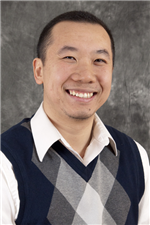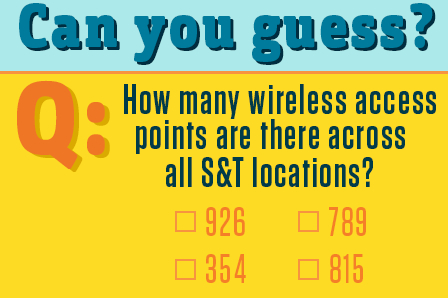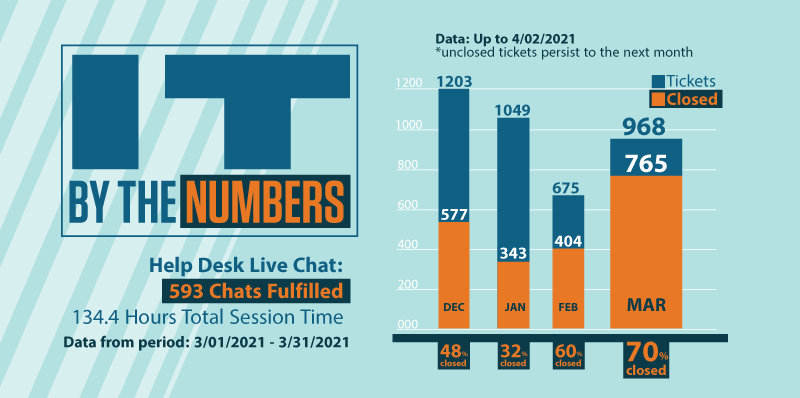
June 21st, 2021, Issue #3A Message from Danny Tang, Incoming S&T CIO
To the Missouri S&T Community,
In just a few short days, I’ll begin serving as S&T’s new Chief Information Officer. Over the past few months, I’ve received many notes of congratulations, welcomes, and offers to assist with our family’s transition. Many have also asked about my priorities and how I might begin my first few months. I’d like to take the opportunity in this month’s IT newsletter to provide a brief update and give a broad idea of what to expect as I start on July 1st.
First of all, I’d like to extend my sincere thanks to the S&T and Rolla community for how welcoming everyone has been. Moving a young family to a new state can be daunting. Yet from the day we arrived, we were flooded with offers of help, cookies from neighbors, and even invitations to kids’ playdates. We still live in a sea of boxes at home and are overly reliant on Google Maps when we venture out, but we could not have asked for a warmer welcome. We’ve already begun to make new memories as our children scored their first runs in the T-ball and Pixie softball leagues. We look forward to building many more wonderful memories in our new life here.
On the professional front, I am eager to start serving S&T to ensure the institution has the IT services it needs to meet its bold ambitions. Instinctively, I want to roll up my sleeves straightaway. However, I am reminded of the wisdom shared with me by Dr. Jim Bruce, retired CIO and emeritus professor at the Massachusetts Institute of Technology. Dr. Bruce advised me to always build relationships and learn from people first. My last question should be “who should I meet with next?” Don’t stop meeting with people until the answer is always someone whom I’ve already met. While I likely can’t meet with everyone at S&T, I intend to take Dr. Bruce’s advice to heart.
Though it may sound cliche, my first priority will be to engage with and learn from the S&T community. I want to understand your individual needs and aspirations as well as your perspective about the institution and where we’re headed. So if over the next few months, you receive an invitation to meet, either individually or in a group, I humbly ask you to accept.
IT intersects all aspects of higher education including teaching & learning, student success, research & scholarship and business operations. Beyond that, I believe in the power of technology to elevate higher education, to enable & accelerate next generation research and train today’s students to join the workforce of the future. However, technology can only have that kind of impact when it is aligned with the needs and aspirations of the institution. I invite you to partner with me to chart out the future of IT at Missouri S&T.
Thank you and see you soon!
Service Updates
Resource mailboxes moving to Shared mailboxes
IT has begun migrating Resource mailboxes to Shared mailboxes beginning with departments that have multiple people accessing the mailbox . Please create a Help Desk request that contains a list of people in your department who will need access to the Shared mailbox. IT will attempt to contact users of any remaining Resource mailboxes.
This migration will allow current delegates of Resource mailboxes to login and use their personal Multi-Factor Authentication (MFA) settings to send and receive e-mail from Resource accounts.
S&T requires MFA on all accounts noted below (unless granted an exception by the campus Information Security Officer (ISO):
- People, Guest, Admin and Resource accounts will always have MFA enabled by default
- Service accounts WITHOUT mailboxes will have MFA disabled by default
- Service accounts WITH mailboxes will have MFA enabled by default
- Resource mailboxes interactive authentication will also be disabled by default (Exceptions to this policy will go through the campus ISO)
The Information Technology & Computing Committee and the S&T IT Department
The Information Technology Computing Committee (ITCC) is a standing committee of the faculty senate. S&T faculty bylaws state that, “ The ITCC advises the Provost and the Chief Information Officer on the formulation and implementation of information technology (IT) and computing activities on campus.”1
Membership in the ITCC consists of a chair and vice-chair who are elected by the voting members at the beginning of the Fall semester each year. The current chair is John Singler from Mathematics and Statistics and the current vice-chair is Andreas Eckert from Geosciences and Geological and Petroleum Engineering. The voting members of the ITCC include:
- one elected member of each academic department
- the director of the library
- two representatives from the Student Council
- and one member of the Council of Graduate Students.
Members of the ITCC provide IT with input from the S&T campus on all matters related to IT and computing that are of interest to students, faculty and staff. This input comes in a variety of forms:
- The CIO and other members of IT present potential items of student, faculty and staff interest to the committee during regular meetings.
- Committee members may take specific IT/computing issues to their departments and units to ask for more feedback. They then bring the resulting feedback to the ITCC.
- The ITCC may also bring questions, comments, and concerns that are reported to the committee from other members of the campus to IT during the regular meetings.
Since technology changes so rapidly, the topics of highest interest to the ITCC tend to evolve quickly over time. Some of the topics that tend to come up frequently or are of high interest most recently are:
- major updates and changes to fundamental systems and services, such as email; computer operating systems; file storage; and the desktop enhancement program
- security related issues such as email security; multifactor authentication and the impact on faculty and staff; cloud based storage and tools; and the campus surveillance camera policy
- the IT budget and impacts of any changes on the campus
The ITCC attempts to look as far into the future as possible, especially when potentially large changes may be coming that are outside the control of S&T IT. IT may be able to inform the ITCC of potential large changes one or two years in advance which allows the ITCC to provide ongoing feedback over time. In some cases, the ability of the ITCC to look far into the future is affected by rapid changes in technology and crucial security related concerns.
ITCC’s goal is to continuously consider basic questions about the future of fundamental IT and computing topics of great importance to the campus so that S&T is always looking ahead.
IT by the numbers: April and May 2021
Solutions for Campus and the Community
Early in the spring semester of last year it was becoming clear that 2020 was not going to be a normal academic year. As Covid-19 became a global pandemic, in-person interactions introduced health risks which called for transitioning from in-person course offerings to a remote format during Fall 2020.
In July, the S&T campus needed a tool to help track exposures across the campus population. Members of the IT Research Support Solutions (RSS) team were tasked with reviewing Sara Alert, a tool developed to automate public health monitoring and reporting of individuals exposed to or infected with an infectious disease. Sara Alert was developed by MITRE in partnership with national public health organizations around the world. The S&T Health Department would be the managers of the data in the tool while S&T IT would provide the service.
In preparation for implementation, Don Howdeshell and Perry Koob of RSS began testing Sara Alert before the start of the Fall 2020 semester. Although initial testing revealed issues that would affect implementation, Don and Perry were able to get help from Aaron Wieberg and Chris Bruno, Ruby developers at Mizzou. With their help, issues were addressed and Sara Alert was moved to production. Once in production, they also worked with MITRE, providing patches to the tool which helped create a more robust product for the larger healthcare community choosing to use Sara Alert.
Many days, nights, and weekends of effort later, Sara Alert was turned over to the S&T Health Department 2 days before semester start. Dr. Dennis Goodman, Tracy Fair-Parsons, and Shana Brumble began using it immediately for new cases and started backfilling previously collected records. A few weeks later Phelps & Maries County Health Department also started using the tool to track quarantine and isolation cases. At peak usage, Sara Alert was tracking case progress for nearly 13% of the combined populations of the S&T campus, Phelps county, and Maries county.
Sara Alert is an example of the collaboration, determination and effort that IT brings to the campus every day. Like many teams in IT, the Research Support Solutions team is often the unseen workforce delivering the technology solutions our campus and community needs.
Richard Altheide Retires after 38 Years with Missouri S&T
Richard Althiede, who retires this summer after 38 years in telecommunications and network engineering at S&T, recently sat down over Zoom with Anissa Lockett of MOREnet to discuss the last 30 years.
Among the topics Richard discussed with Anissa are:
- what it was like to be involved from the beginning with MOREnet’s plans to build a research network that would be able to get internet service to all the public school districts in Missouri
- what he looks forward to most about retirement
- being a frequent teacher at MOREnet conferences
- what he’s most proud of having developed and left behind
- where he sees the internet in 10 years
For a more in depth look at the conversation between Richard and Anissa, visit the MOREnet blog. If you would like to wish Richard well before he retires on July 1, you can drop him a note at rwa@mst.edu
About MOREnet: MoreNET provides internet connectivity, technical services, resources and support, and technical training to Missouri’s K-12 schools, colleges and universities, public libraries, health care, government and other affiliated organizations.




